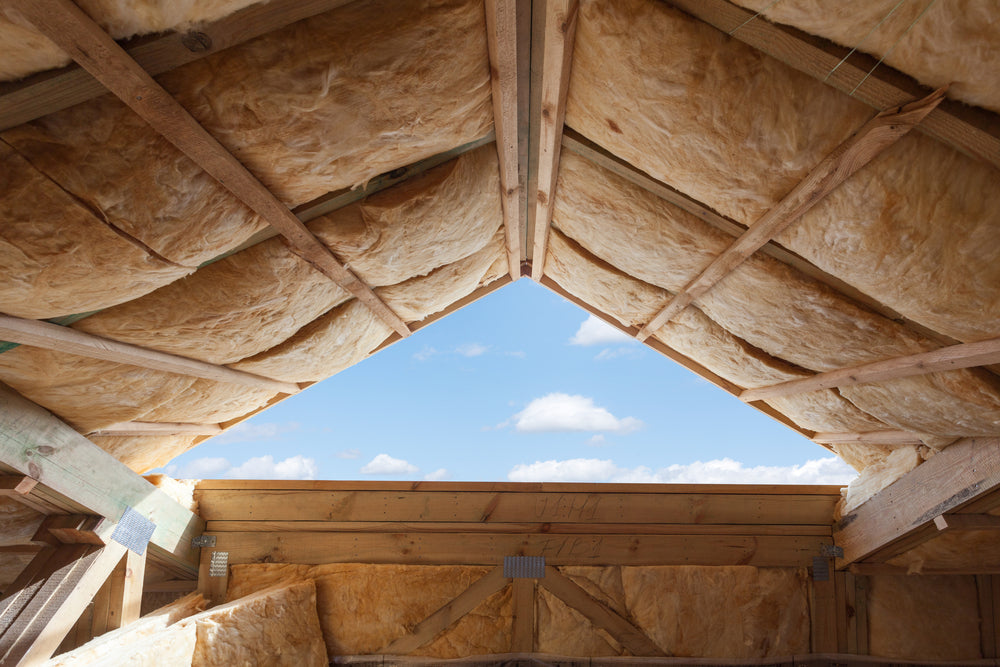
Understanding Earthwool Insulation: Comparing R4, R5, R6, and R7
Share
Choosing the right insulation for your home or commercial space is crucial for energy efficiency, comfort, and sustainability. Earthwool insulation by Knauf offers a range of products with different R-values to suit various needs. In this comprehensive blog, we’ll compare the R4, R5, R6, and R7 Earthwool insulation batts to help you make an informed decision.
What is R-Value?
The R-value is a measure of thermal resistance. The higher the R-value, the better the insulation’s ability to resist heat flow, meaning it provides greater thermal performance. This is important for maintaining comfortable indoor temperatures and reducing energy consumption.
Earthwool R4 Insulation
Features:
- R-Value: R4.0
- Thickness: Typically around 195mm
- Applications: Suitable for walls and ceilings in both residential and commercial buildings.
Benefits:
- Energy Efficiency: Offers solid thermal performance, making it suitable for moderate climate conditions.
- Cost-Effective: Provides a good balance between cost and performance.
- Environmentally Friendly: Made from up to 80% recycled glass and uses ECOSE® Technology, which is free from added formaldehyde and artificial dyes.
Ideal For: Homes in areas with moderate temperature variations, providing sufficient insulation without the need for extremely high thermal resistance.
Earthwool R5 Insulation
Features:
- R-Value: R5.0
- Thickness: Approximately 210mm
- Applications: Ideal for use in walls, ceilings, and floors where higher thermal resistance is desired.
Benefits:
- Enhanced Energy Savings: Higher R-value means better energy efficiency, reducing heating and cooling costs.
- Improved Comfort: Provides better thermal resistance, resulting in more stable indoor temperatures.
- Sustainability: Like all Earthwool products, it is eco-friendly and promotes sustainable building practices.
Ideal For: Buildings in regions with more significant temperature fluctuations, offering better insulation to maintain comfort throughout the year.
Earthwool R6 Insulation
Features:
- R-Value: R6.0
- Thickness: Around 275mm
- Applications: Suitable for ceilings, walls, and floors where superior thermal performance is required.
Benefits:
- Superior Thermal Resistance: Provides high-level insulation, excellent for extreme climates.
- Energy Efficiency: Significantly reduces energy consumption, leading to long-term cost savings.
- Durability: Resistant to moisture, mold, and vermin, ensuring long-lasting performance.
Ideal For: Homes and buildings in areas with extreme temperatures, both hot and cold, requiring top-tier insulation.
Earthwool R7 Insulation
Features:
- R-Value: R7.0
- Thickness: Approximately 330mm
- Applications: Best suited for ceilings and areas where maximum thermal resistance is needed.
Benefits:
- Maximum Energy Savings: The highest R-value in the Earthwool range, offering the best thermal resistance and energy efficiency.
- Optimal Comfort: Maintains stable indoor temperatures even in the harshest climates.
- Sustainability: Made using the same eco-friendly materials and technology, promoting a healthier environment.
Ideal For: Buildings in extreme climate conditions or for those seeking the highest level of energy efficiency and comfort.
Choosing the Right Insulation
When selecting the right Earthwool insulation for your project, consider the following factors:
- Climate: Assess the temperature variations in your area. Higher R-values are better for extreme climates.
- Budget: Higher R-value insulation often costs more initially but can lead to greater energy savings over time.
- Application: Determine where the insulation will be used (walls, ceilings, floors) and choose the appropriate thickness and R-value.
- Sustainability Goals: All Earthwool products are eco-friendly, but choosing the right R-value can further enhance your building’s overall energy efficiency and reduce your carbon footprint.
Considering the Climate of Western Australia
Western Australia's climate varies significantly across its vast landscape, but it is generally characterized by hot, dry summers and mild, wet winters. Here’s how different Earthwool insulation R-values can meet the specific needs of Western Australian homes:
1. Hot Summers: During the scorching summer months, effective insulation is crucial to keep the heat out and maintain a cool indoor environment. Higher R-values, such as R6 and R7, are particularly beneficial in reducing the need for air conditioning, thereby lowering energy consumption and costs.
2. Mild Winters: In winter, insulation helps retain warmth, reducing the need for heating. While R4 and R5 can provide sufficient thermal resistance for milder winters, R6 and R7 offer enhanced performance, ensuring a consistently comfortable indoor temperature with minimal energy use.
3. Coastal vs. Inland: Coastal areas, such as Perth, experience milder temperature extremes compared to inland regions. Homes in coastal areas may find R4 and R5 insulation adequate, while those in more extreme inland climates might benefit from the superior thermal resistance of R6 and R7 batts.
Conclusion
Earthwool insulation offers a range of products to meet various thermal performance needs. Whether you need R4, R5, R6, or R7 insulation, each option provides unique benefits tailored to different climate conditions and applications. By understanding the differences and advantages of each R-value, you can make an informed decision that will enhance your home or building's comfort, energy efficiency, and sustainability.
For more information on Earthwool insulation products and to find the best option for your needs, visit Perth Insulation Centre.
